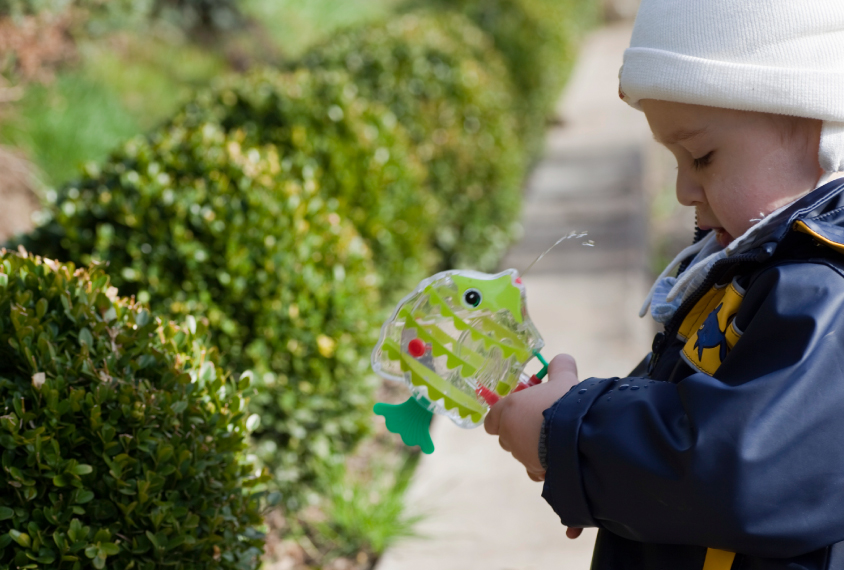
Stefan Kunz / Getty Images
THIS ARTICLE IS MORE THAN FIVE YEARS OLD
This article is more than five years old. Autism research — and science in general — is constantly evolving, so older articles may contain information or theories that have been reevaluated since their original publication date.
Sensory abnormalities could be among the first signs of autism risk — and a target for early treatment. The unpublished results from two studies were presented at the 2016 Society for Neuroscience annual meeting in San Diego.
The studies focus on infant siblings of children with autism, or ‘baby sibs,’ who are at a 20-fold increased risk of the condition.
The first study includes 20 baby sibs and 20 control infants without a family history of autism. It shows that baby sibs seek out sensory stimulation more than controls do.
When the children were 18 months old, researchers assessed how they interacted with a series of eight sensory toys, including a vibrating bug, a dome that plays music and sprays glitter, and a duck that sprays bubbles when squeezed.
As a group, the baby sibs show more intense fascination with these toys than controls do. This group trend seems to be driven mainly by a subset of children who are later diagnosed with autism.
Even at 18 months, before a reliable diagnosis of autism is possible, the baby sibs who show more sensory-seeking behaviors also tend to be more difficult to engage socially.
“They’re getting engrossed in that sensory seeking,” says Tiffany Woynaroski, an assistant professor at Vanderbilt University in Nashville, Tennessee, who presented the work on Monday. The baby sibs who do more sensory seeking require more taps on their shoulder or repetitions of their name to be social.
Baby sibs who exhibit the most sensory-seeking behaviors at 18 months also have the most severe autism features at age 3. “It seems to be all due to the fact that when babies are sensory seeking, they’re not orienting to others,” Woynaroski says.
Social waves:
The researchers also performed electroencephalography (EEG) to measure electrical activity in the brains of the 18-month-olds. At this age, an EEG measure known as alpha power is thought to be stronger in the right hemisphere among baby sibs, and stronger in the left hemisphere in controls1.
The new study found that the baby sibs with the most sensory-seeking behaviors show the strongest right-hemisphere bias of alpha power.
The second study, which includes many of the same baby sibs, found that the more under-responsive to sensory stimuli a child is, the more his alpha power shifts to the right hemisphere. In this study, researchers assessed the infants’ sensory responsiveness using a parent questionnaire.
The results of the two analyses jibe with each other, Woynaroski says. “Babies who tend to be hyposensitive also tend to show more sensory-seeking behaviors,” she says.
The children who are under-responsive to sensory stimuli show several other distinctive patterns of brain activity. They have larger brain waves at frequencies known as the ‘theta band’ than baby sibs with more typical levels of sensory responsiveness. They also show greater synchronization of alpha and theta waves between different parts of the brain. Overall, their brain activity shows less complexity, a pattern seen in some individuals with autism2.
The findings suggest not just that sensory abnormalities may be an indicator of autism risk, but that they may also offer a way to modify it. “Sensory seeking hasn’t ever really been a target for early intervention,” Woynaroski says. “This suggests we need to direct some effort there.”
For more reports from the 2016 Society for Neuroscience annual meeting, please click here.
By joining the discussion, you agree to our privacy policy.